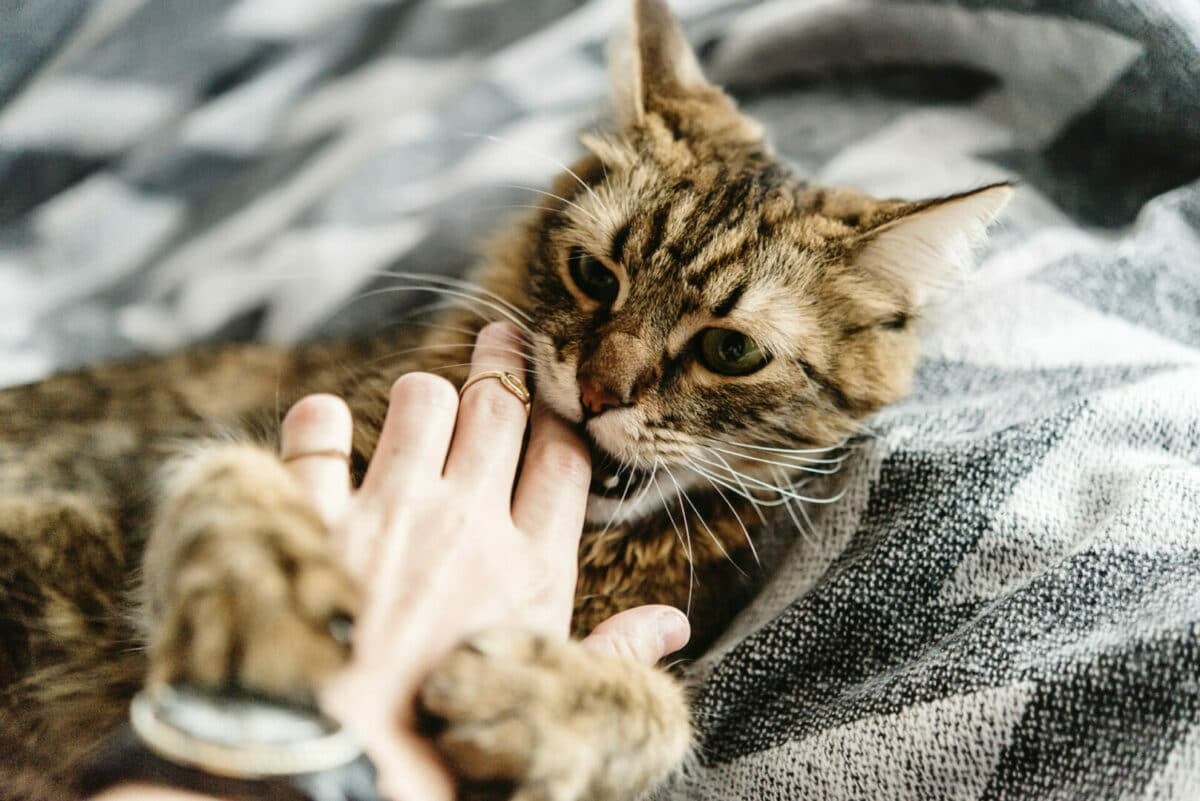If you're a first-time cat owner, you may not know there are signs and signals from your cat communicating their thoughts or needs. Whether they tell you they enjoy your company, they want to play, or they're hungry, they rely on you to answer their "catcall."
Here are eight ways that your cat may be communicating with you. Figure out what your cat tells you. Can you communi-CAT?
Meow
Yes, the meow is obvious, but it's a significant one. A cat's meow is reserved for cat-human communication. It's the most unique communication style of all animals because they adopted this language specifically to speak to their humans! Although cats may growl or hiss at one another, you won't ever hear them meow at each other, except maybe when they're kittens.
Purr
Most people think when a cat purrs, they tell you that they enjoy your company. This is sometimes true, but they also purr when they're nervous. In times of stress, it acts as a self-soothing mechanism. It's kind of like smiling even when you don't feel happy. It's a self-fulfilling prophecy. Fake it 'til you make it.
Paw
They want your attention but don't feel like talking, so they paw at you. Maybe a meow accompanies it if you're ignoring them.
Dr. Levin and the staff at Embassy Lake Animal Hospital serve the community of Cooper City, Florida. They say, "Cats tend to use pawing as a form of communication. Cats paw at us out of instinct, by accident, to give or get affection, and to get our attention. Most times, when cats paw at us, it means nothing serious. Sometimes, however, they are getting our attention to tell us that they are sick or in pain."
If you suspect your cat is sick, look for other signs that are out of the ordinary and make an appointment with your vet.
Flat Ears
Cats flatten their ears when they play and when they're aggressive. This is most likely to keep their ears from damage as they play or fight. Keeping them flat against their head gets them out of the way of an attack.
They also position their ears back to show that they don't like what's going on. As you see here, Zoe doesn't like her face licked.
Photo source: Brandon Ellrich
The Look
You know the one. They want something and they know you know what it is. All they have to do is look up at you wide-eyed and expectant. They see direct eye contact as a form of aggression when it comes to strangers, but with you, it's a form of communication and sometimes manipulation.
The Garfield Eyes
If you're familiar with Garfield, you know that most of the time, his eyes are half-closed in a lazy sort of way. When your cat has this look, they're relaxed, content, and maybe even thinking about a nap. They're certainly not thinking about moving from the chair you want to sit in.
Photo source: Brandon Ellrich
The Shake
After they're done eating, they move away from their food bowl and then shake their back leg as if to say, "I'm done. You may take it away." There's also the tail shake. When my cat wants a treat, he goes toward the cabinet or fridge and turns his rear end toward it as his tail quivers. There's usually a meow to accompany it.
This Tail Shake video, posted July 4, 2023, got about two thousand views within a few hours after posting.
The Rub
You've seen it; you've felt it. Your cat rubs their body against your leg or they may rub their face on your hand. My cat, Zak, tends to be a face rubber. When they rub their mouth or face on things, they leave behind their scent, marking their territory, in a sense. If they rub on your hand or face, they claim you as theirs.
They also enjoy grooming or brushing their cheeks. There are self-groomers you buy that attach to the outside corner of a wall or doorway trim. They walk by and brush their face across the bristles.
When Your Cat Talks, Listen
Every cat is different and this isn't an exhaustive list, but they all communicate in some way. If you see your cat doing something in a way you think is odd, it may be a form of conversation.
You're not going to read their minds, but careful observation may lead you to an answer. If you want to figure it out, keep a journal or "feline file" to record their behavior. Note the behavior, the time of day, and what other details or elements are present. After a couple of weeks, look back and discover what patterns emerge.
What about your cat? In what ways do they communicate with you?
Subscribe to CattitudeDaily to discover more information about all things feline such as cat behaviors, cat communication, and more.





